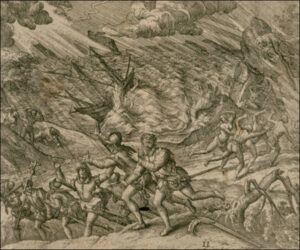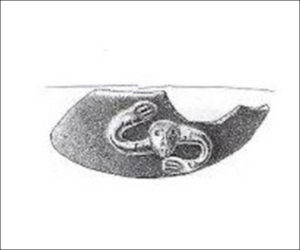A tremendous storm ravaged “Española” in the summer of 1495 (528 years ago), and the Spaniards adopted the Taínos’ word for it—hurakán—as the storm’s fury and swirl so distinguished it from storms they knew.
As depicted in Columbus and Caonabó, the hurricane uprooted bohíos and trees throughout the island and shacks at Isabela, and three of the four Spanish ships anchored at Isabela sank, the Niña alone surviving. Some Spaniards believed Satan intended to confound the baptism of the “Indians.” Some Taínos hoped their own spirit Guabancex—the female spirit of hurakáns and destruction—sought to blow the Europeans away.
The engraving below (contained in Columbus and Caonabó) is of a hurricane on Española, Theodor de Bry, 1594, courtesy of the John Carter Brown Library, rec. no. 09887-10. The second image (a potsherd) is of Guabancex, taken from M. R. Harrington, Cuba before Columbus, 1921.


